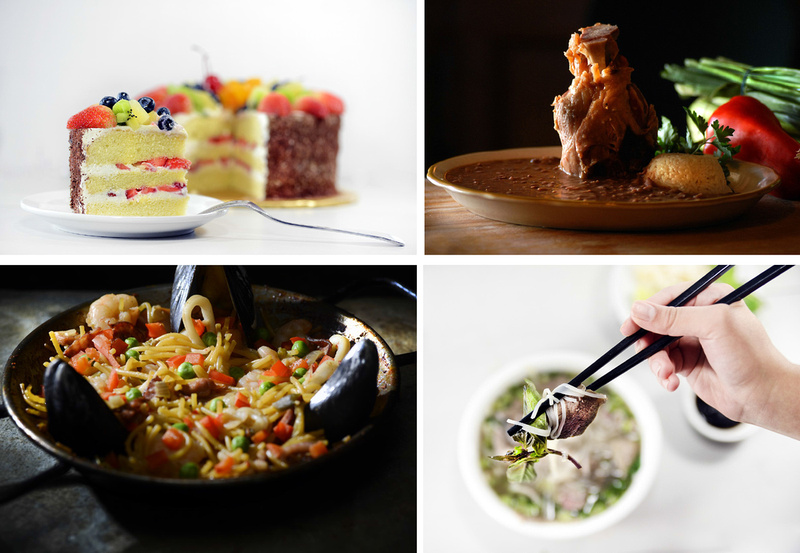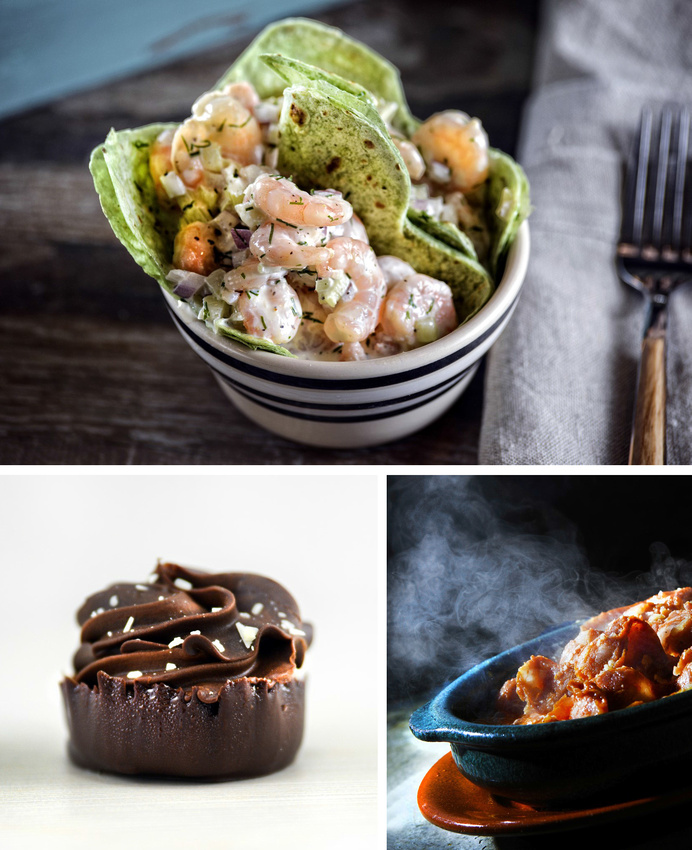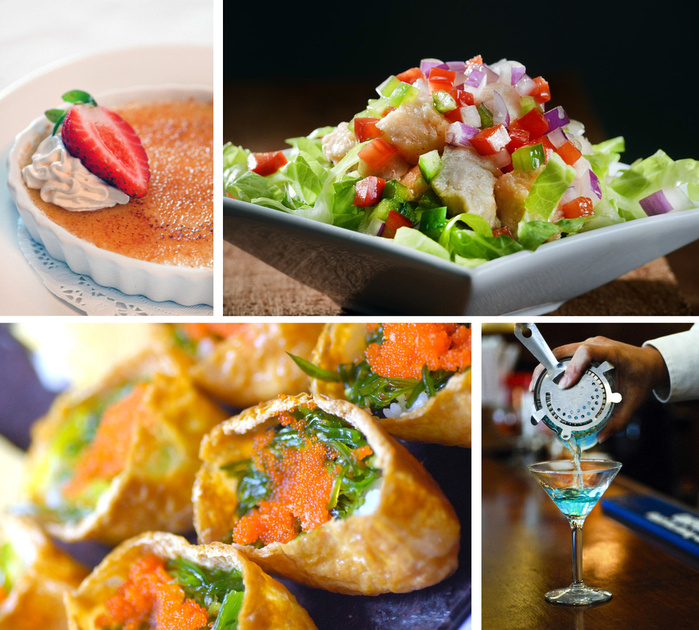SHRIMP HAPPENS: 9 Winning Ways to Work with Food Clients Before & During Photo Shoots
Ask any well-rounded, professional shooter and they'll tell you that food photography is a whole different beast from photographing models, automobiles, jewelry, corporate headshots, and the like. Part of the reason lies in the behind-the-scenes essentials of planning and organization, especially for big shoots, absent from most how-to tutorials which I will cover in this blog post. Granted, "organization" is not a particularly glamorous subject compared to shop talk about camera gear, composition and angles for food photography, but with 20 years experience working for newspapers, magazines and commercial clients, I’ve picked up a few gems that all but guarantee smooth sailing when the day of the shoot parts the clouds to let the fun shine in. Yes, it should be fun. Read on ... (All photos by James Gaffney Photography.) I. PRE-SHOOT CONSULTATION If I'm shooting for a commercial client, as opposed to an editorial shoot for a newspaper, magazine or blog, the pre-shoot consultation (or production meeting) is second in importance only to the photo shoot itself. The pre-shoot consultation is when I meet with the restaurant owner and/or executive chef to discuss in detail not just what we are going to shoot but also how they want the food to look.
1. The final look of the food will be determined by several factors not the least of which is lighting. Food photography lighting can range from what I call “brighty-white” (where high-key lighting is used to create a minimum of shadows and maximum of midtones and highlights), to the opposite end of the spectrum which I call “Euro-moody” (which relies on shadows and darker midtones to create a sultry, quasi-romantic look), as seen in the images below. In the middle are all manner of variations.
2. The pre-shoot consultation is also where I work alongside restaurant staff to develop how the food is to be set and styled. Options include photographing the food against a white background such as inside a light tent or against seamless white paper. This is advantageous if my client likes a super-clean look or has a graphic artist who is going to need a clean clip-path in Photoshop during post-processing. Another option is shooting in a natural setting and/or with textural backgrounds. Here you'll need to discuss the kind of backgrounds -- for example, faux stressed wood, blue or earth-tone Mediterranean tile, etc., which you'll need to buy ahead of time or order online. (I always check first with the client as to their budget for these expenditures.)
Discuss, too, the color and style of table napkins, plates, types of silverware, etc. Typically you’re not going to want each and every single dish styled exactly the same way. Take an inventory of what the restaurant already has on hand and determine if you will need to purchase additional styling props. Ask to inspect the silverware because if the knives, forks and spoons look old, weatherworn or scratched, it will detract from the photograph. Upscale or antique silverware will need to be polished ahead of the shoot. Below are examples of food set and styled utilizing different backgrounds, bases and utensils.
3. Create a shot list. This will include every dish to be photographed during the shoot, which will likely feature a mix of starters, main courses, plus a few salads, soups and desserts. Maybe a couple of cocktails. For the photographer it's always helpful to know what's coming out of the kitchen before it actually does. Also, review the menu and work with the chef to determine those dishes that will be most photogenic. Not every dish is worthy of being photographed. Salads and anything sculptural like soft-shell crab, for instance, are always winners; less so those dishes laden in heavy sauces because the sauce typically covers up the food. Below are examples of beautifully sculptural, photogenic dishes:
Also, look for ways to style the dish so that items on the plate are differentiated creating clear space between food items. A dinner plate completely covered with food without spaces or differentiation makes for a less visually interesting/attractive image. Here the chef will be your best ally because they want only their most eye-appealing dishes represented on the restaurant’s menu, website, marketing roll-outs and advertisements, etc.
4. Group dishes into two categories – hot and cold. Why? Hot dishes need to be photographed no more than five minutes after they are plated. After five minutes the food begins to cool and the rapidly dropping temperature changes not only the colors but also the textures. For instance, meat fats dry out and lose their glistening quality; steamed veggies lose color and start to look flat; sauces congeal, losing their savory appearance, and begin to look oily. Cold dishes, on the other hand, allow longer times to photograph. Perhaps you and the chef agree to shoot all of the cold dishes first and push the hot dishes toward the end of the session if only because they need more time to cook. Or vice versa. Either way, take the lead and make a decision.
5. Remind the chef not to the “slam the table” by preparing hot foods too quickly ahead of time because the longer these dishes are waiting in a holding pattern the greater the chances the dish will have to be re-cooked from scratch. Why re-cook? Simple: reheated dishes don't photograph well. So, don’t do it – ever.
6. Determine ahead of time which dishes need to be undercooked for optimal image outcome. As a rule of thumb almost everything that gets cooked should be undercooked for food photography – this way vegetable colors are brighter, the textures more firm; meats have more fat and thus more glistening qualities; fish looks more pink and flaky; etc.
II. SHOOT DAY 7. Talk, talk, talk: Ongoing communication with the chef is essential because there will be (or at least should be) no small amount of back and forth between the photographer and the person in the kitchen taking lead responsibility for how the dish appears on the set when being photographed. Yet, no matter how well you’ve planned there is bound to be a wee bit of chaos – sorry but it goes with the territory. Perhaps it’s something as simple as a miscommunication that results in the barbecue shrimp flying out of the kitchen earlier than expected when your photographic backdrop/styling was custom created for the beef Wellington. Don’t panic -- shrimp happens. Simply regroup, refocus (literally and figuratively) and get your game back.
8. Safety, please: Depending on the number of people on hand the day of the shoot, a food photography set can become easily congested and has the potential to become a hazard considering the amount of expensive lighting gear, large light modifiers, light stands and tripods all in close proximity. You’re going to be less than overjoyed when someone accidentally trips over a light stand and injures themselves or crashes your $600 Einstein monolight. My rule of thumb is simple: keep everyone off the set other than the photographer (me), my assistant (if applicable) and the chef and/or their assistant. What you don't need are unnecessary hangers-on cluttering your set and disrupting your working environment and workflow. Remember, as the photographer the set is your domain. So respect and attend to your set with a keen eye on protecting everyone’s safety as well as your valuable equipment.
9. For my eyes only: I specifically spell out in my contract that I am the only person allowed to take photographs during the shoot. Period. This means no cell phone or camera photography by “assistants” and/or marketing or agency personnel, etc. This is how I protect my photography, my client, my reputation and lighting configurations that have taken years to perfect. This ironclad rule holds no matter if the person wielding the smartphone or point-and-shoot is the chef’s spouse or the mother of the ad agency owner. Images resulting from the shoot are my intellectual property until that time when I contractually waive my ownership rights.
In an era where the ever-exploding abundance of stock images available for free reproduction rights or low-cost licensing fees has devaluated the market for individualized food photography, there will always be a need for commercial and editorial shooters to deliver something no one else can: professionally rendered, high-quality images of a restaurant’s unique and signature dishes for which it has earned its hard-won reputation. Cheers!
Keywords:
James Gaffney Photography,
commercial photography,
food,
food photography,
food photography client,
food photography lighting,
photogenic dishes,
photography client,
post-processing,
pre-shoot consultation,
set safety,
shot list
Comments
No comments posted.
Loading...
|





